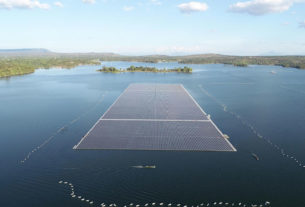
Enabling green building development in Vietnam
Vietnam’s major cities are changing at blinding speed. Over the past 20 years, cities like Ho Chi Minh and Hanoi have seen residential areas expand, malls open, skyscrapers rise, and populations grow, among many other changes that project the country’s rapid economic growth.
Vietnam’s urbanisation has grown by 7 per cent since 2011, and now the country’s urban population stands at 38 per cent. Prospects suggest populations in Ho Chi Minh City and Hanoi will expand by 4 million and nearly 3 million, respectively, over the next decade.
At this rate, the Ministry of Construction expects housing demand to significantly rise by 70 million square metres each year. This is equivalent to 17,500, 30-floor buildings annually. To slow the harmful effects of construction and urbanisation to the environment, the government started to incentivise the construction of more energy-efficient buildings in line with the country’s National Green Growth Strategy as Vietnam commits to achieve net-zero emissions by 2050. However, in 2021 the nation recorded just over 200 green building projects.
Buildings in Vietnam account for up to 40 per cent of the country’s total energy consumption. Disrupting the industry with energy-efficient solutions and the widespread use of green building practices has huge potential. Integrating these solutions into the design of a building will help achieve energy savings, reduce carbon emissions, and provide eco-friendly spaces where people can live and work safely and more sustainably.
SP Group helps developers, building owners, and cities reach their sustainability goals by innovating energy-efficient solutions that enable green building efforts.
Generating green energy remains essential in greening buildings. On that note, SP Group is committed to be the largest rooftop solar operator in Vietnam, targeting 1.5 GW of utility scale renewables and rooftop solar projects by 2025. This will drive the transition to cleaner energy for industrial parks and manufacturing facilities, as well as commercial districts.
Another way to help buildings save energy is through reducing energy consumed by air-conditioning. Currently, there are more than 1 billion air-conditioning units around the world. As temperatures continue to rise, it is not impossible to see this number swell beyond 4.5 billion by 2050.
Besides cooling systems accounting for up to half of a building’s total energy consumption, air-conditioning units also leak greenhouses gases because they use hydrofluorocarbons as refrigerants, which are hundreds of thousands of times more potent at trapping heat than carbon dioxide.
Due to Vietnam’s hot and humid climate in the south, air-conditioning is prevalent. Between 2016 and 2021, Vietnam’s market for air conditioners grew by almost 14 per cent annually. A system called district cooling, for example, meets the inevitable demand for cooling while reducing carbon emissions, energy consumption, and maintenance costs. District cooling effectively cools buildings at a larger scale, but in a greener and more energy-efficient way.
District cooling works by generating chilled water in a cooling plant. Cool water is then distributed to buildings in a closed loop network. Energy transfer stations in each building will distribute the chilled water to the building’s air-conditioning system to cool the air. The water is then pumped back to the cooling plant to be chilled again – and the cycle repeats. With district cooling, buildings do not need to have their own chillers, helping to save space. The system reaps the benefits of economies of scale by sharing chiller capacity that is operated and maintained by a professional technical team, making it more efficient.
While district cooling is still nascent in Vietnam, other countries like Singapore are already starting to experience the benefits. In 2006, we deployed a district cooling system 25 metres beneath the Marina Bay district, a live-work-play development in Singapore, to cool 16 buildings in the area, including Marina Bay Sands and the Marina Bay Financial Centre.
By 2026 we will be cooling a total of 28 buildings and developments, helping the district to save almost 20,000 tonnes of carbon emissions annually, which is equivalent to removing over 17,600 cars off the roads.
Given the success on how district cooling can save electricity and reduce carbon emissions, we have also explored widening district cooling’s application for other industries and customers. Just earlier in the year, we announced a partnership with STMicroelectronics to design and install Singapore’s first district cooling system for industrial usage, which will help them to achieve 20 per cent savings in cooling-related electricity consumption annually by improving aggregated chiller system efficiency, as well as enable ST to reduce carbon emissions of up to 120,000 tonnes per year.
We will also be installing a specially engineered district cooling system for brownfield developments in Tampines Town Central – a vibrant commercial hub in the east of Singapore. The system, which will cool seven existing buildings in the town centre, will save enough energy to power more than 900 apartments for a year, as well as to help the town centre reduce its carbon emissions by almost 1,400 tonnes annually.
Enabling more green buildings in Vietnam can help the country take a step towards achieving its sustainability goals. This can be done through innovations like district cooling, rooftop and utility-scale renewables, and our digital energy solutions to help achieve greater energy efficiency.
Source: https://vir.com.vn/enabling-green-building-development-in-vietnam-98258.html


